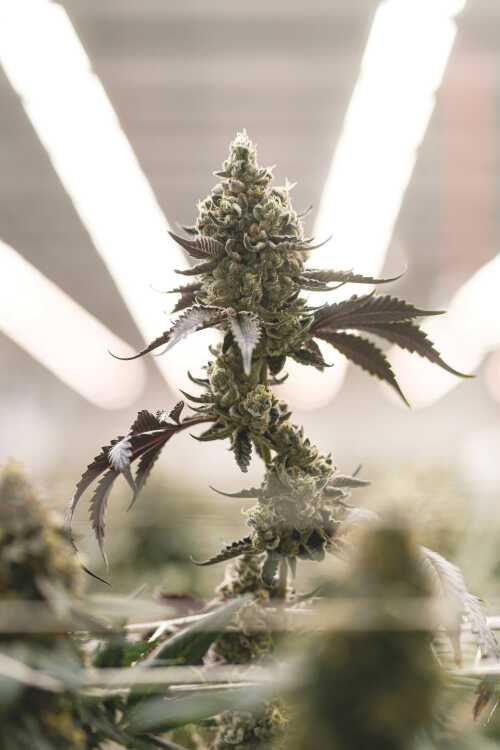As Missouri considers recreational marijuana, there’s a cautionary tale from other states

Marijuana violations have taken more than 10,000 truck drivers off the road in 2022, further complicating supply-chain issues that have plagued the U.S. economy since COVID-19 hit our shores two years ago.
That's just one of many side-effects in the ongoing push for the legalization of marijuana.
Missouri voters will decide in November whether recreational use should be allowed in the Show Me State. Medical use of marijuana is already approved.
Proponents argue it’s time to fully legalize marijuana and allow states and local governments to realize potential economic opportunities, but others question whether the monetary gains are worth the negative consequences based on the experiences in other states.
Colorado case study
In 2012, Colorado and Washington became the first states to legalize recreational marijuana with state-licensed retail sales beginning in 2014.
The Rocky Mounty High Intensity Drug Trafficking Area produces an annual report that reviews the impact of Colorado’s legalization of marijuana. The 2021 report offers a glimpse into some of the negative consequences.
Since legalization, traffic deaths with drivers testing positive for marijuana have gone up 138%. Meanwhile, all traffic deaths increased 29%.
In 2013, there were 55 deaths involving drivers who tested positive for marijuana. By 2020, the number jumped to 131.
In 2013, 11.4% of all Colorado traffic deaths involved a driver who tested positive for marijuana. By 2020, the number had increased to 20.1%.
The study further notes that in 2020, of the 120 drivers in fatal crashes who also tested positive for marijuana, 117 of them had the psychoactive ingredient of marijuana known as THC in their blood. “This would indicate use within hours according to state data,” the authors of the study note.
And 69% of these individuals exceeded 5 nanograms per milliliter, the state’s permissible level for driving.
Marijuana use in Colorado is starting at a young age, according to the study. Past month marijuana use for ages 12 and older is 61% higher than the national average.
For college age users (ages 18-25), use increased 10% when recreational marijuana was legalized and is 53% higher than the national average.
Youth marijuana usage (ages 12-17) is 39% higher than the national average.
The impact on young people
A study earlier this year published in the Journal of Clinical Psychology looked at the impact of marijuana use among adolescents between the ages of 12 and 18 and the development of schizophrenia in early adulthood.
The findings indicated both high- and low-frequency marijuana usage was associated with a significantly increased risk of schizophrenia.
“Through analysis, the current study results tend to favor the hypothesis that cannabis use is a causal factor for developing schizophrenia and other psychotic disorders. This could result from brain development disruption, especially during critical neurological maturation, during adolescence,” the authors of the study wrote.
Another study published in The American Journal of Psychiatry (May 2020) indicates there is an association between cannabis use and physical violence.
“The studies included in this meta-analysis of a large sample of adolescents and young adults collectively suggest that cannabis use is a moderate risk factor for the perpetration of violence,” the authors wrote. “With ongoing trends toward cannabis legalization in Western countries, youths should be educated about the risks associated with use of cannabis, including the risk of future violence.”
Former NYT reporter’s analysis
Count former New York Times reporter Alex Berenson among those passionately against the legalization of marijuana use.
Berenson, who authored the book “Tell Your Children: The Truth About Marijuana, Mental Illness and Violence,” wrote an essay on the subject in The Wall Street Journal.
He notes that in 2006, about 3 million Americans reported using marijuana at least 300 times a year. In 2017, it jumped to 8 million. By comparison, about 12 million Americans drink alcohol daily. But when looking at the number of drinkers vs. the number of marijuana users, one in 15 drinkers consume alcohol daily, he wrote, whereas one in five marijuana users use cannabis daily.
Berenson also posits that marijuana legalization is leading to more violent crime. In his Wall Street Journal essay, he wrote that the first four states to legalize recreational marijuana — Colorado, Washington, Alaska and Oregon — saw huge jumps in crime compared to the national average.
“Combined, those four states had about 450 murders and 30,300 aggravated assaults in 2013. In 2017, they had almost 620 murders and 38,000 aggravated assaults — an increase far greater than the national average,” he wrote.
It’s also worth noting that the mass shooters involved in Rep. Gabby Giffords’s constituent meeting (2011), the Aurora, Colorado movie theater (2012), Pulse nightclub in Orlando, Florida (2016), First Baptist Church in Sutherland Springs, Texas (2017), and Marjory Stoneman Douglas High School in Parkland, Florida. (2018), were all reported to be marijuana users. As the psychology studies have shown, marijuana use can increase youth schizophrenia. Today's marijuana, note critics, is produced in much higher potency than in the past.
Drug cartels
Another problem from legalization is that states that have legalized recreational marijuana are having to deal with new challenges from drug cartels.
In Oregon, The Associated Press reported in May that foreign drug cartels have established illegal outdoor marijuana farms. A state task force was formed to recommend funding and command structure to help law enforcement deal with the challenges, including labor trafficking, water theft and regulations on genetic engineering of cannabis.
According to the AP story, the Oregon Criminal Justice Commission said it seized 551,000 plants in three Oregon counties from July 1, 2020, to June 30, 2021. And this was only a “tiny fraction” of the illegal crop. Authorities also seized nearly $3.4 million in cash.

The problem is also moving indoors.
“We’re starting to hear about Josephine County, a lot of operations moving indoors,” Oregon State Police Sgt. Tyler Bechtel told The Associated Press. “It makes it all that much harder to see it from the street, see it from the air, just smell it. And it’s not a seasonal problem when you move indoors. It’s a year-round problem.”
The Oregon Criminal Justice Commission noted in its report “Illegal Marijuana Market Enforcement Grant Program Report” dated Jan. 1 of this year that the illegal market is causing “public safety concerns, including diversion of marijuana to other states, sales of marijuana to underage buyers, illegal cultivation of marijuana on private, state, and federal property, and enrichment of organized criminal operations.”
The problems are similar in California. The Louisville Courier Journal reported in a December 2021 story that the marijuana black market in California continues to thrive as thousands of illegal grows are blending in with legal grows.
Sheriff Matt Kendall of Mendocino County told The Courier Journal there are as many as 10,000 illegal grows in just his jurisdiction. He will target the worst 100.
“I’m fighting a dragon with a needle,” Kendall told the Journal.
And this is just a small portion of California’s illegal pot problem.
In 2021, 1.2 million illegal cannabis plants and more than 180,000 pounds of processed marijuana were seized, according to a story by Amanda Chicago Lewis in The Guardian.
Lewis reported that the illegal market includes those who are well intentioned but couldn’t make it financially going about it the legal way due to the high tax burden, limited availability of licenses and high regulatory costs. And then there are armed cartels, using dangerous chemicals seeping into the groundwater.
Lewis notes California’s decision to legalize recreational marijuana in 2016 through Proposition 64 has been far from a panacea.
“Behind the flashy facade, the legal weed industry remains far from the law-abiding, prosperous sector many had hoped for. In fact, it’s a mess,” she wrote.
































Respond to this story
Posting a comment requires a subscription.